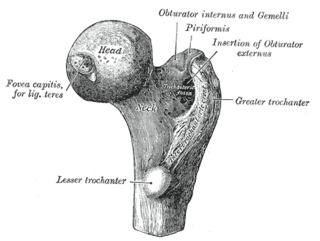
Anatomy is the branch of biology concerned with the study of the structure of organisms and their parts. Anatomy is a branch of natural science which deals with the structural organization of living things. It is an old science, having its beginnings in prehistoric times. Anatomy is inherently tied to developmental biology, embryology, comparative anatomy, evolutionary biology, and phylogeny, as these are the processes by which anatomy is generated over immediate (embryology) and long (evolution) timescales. Anatomy and physiology, which study (respectively) the structure and function of organisms and their parts, make a natural pair of related disciplines, and they are often studied together. Human anatomy is one of the essential basic sciences that are applied in medicine.
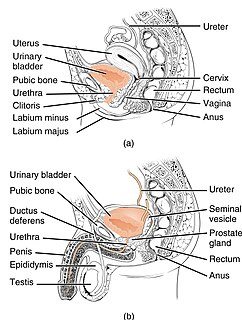
In anatomy, the urethra is a tube that connects the urinary bladder to the urinary meatus for the removal of urine from the body. In males, the urethra travels through the penis and also carries semen. In human females and other primates, the urethra connects to the urinary meatus above the vagina, whereas in non-primates, the female's urethra empties into the urogenital sinus.
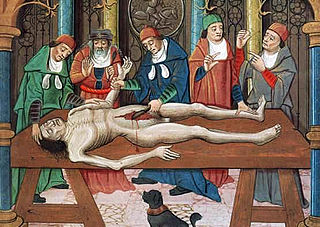
The history of anatomy extends from the earliest examinations of sacrificial victims to the sophisticated analyses of the body performed by modern scientists. The study of human anatomy can be traced back thousands of years, at least to the Egyptians, but the science of anatomy, as we know it today, did not develop until far later. The development of the study of anatomy gradually built upon concepts that were understood during the time of Galen and slowly became a part of the traditional medical curriculum. It has been characterized, over time, by a continually developing understanding of the functions of organs and structures in the body.
The human body is the structure of a human being. It is composed of many different types of cells that together create tissues and subsequently organ systems. They ensure homeostasis and the viability of the human body.

The nasal bones are two small oblong bones, varying in size and form in different individuals; they are placed side by side at the middle and upper part of the face and by their junction, form the bridge of the nose.
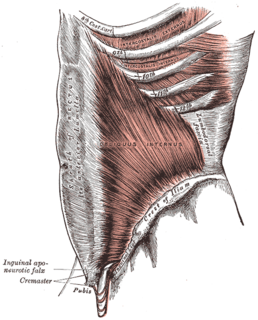
A fascia is a band or sheet of connective tissue, primarily collagen, beneath the skin that attaches, stabilizes, encloses, and separates muscles and other internal organs. Fascia is classified by layer, as superficial fascia, deep fascia, and visceral or parietal fascia, or by its function and anatomical location.
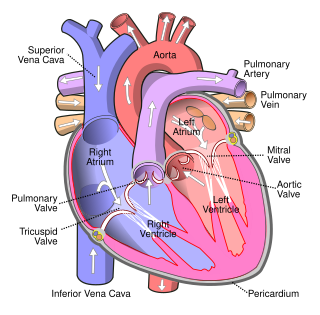
The pulmonary veins are the veins that transfer oxygenated blood from the lungs to the heart. The largest pulmonary veins are the four main pulmonary veins, two from each lung that drain into the left atrium of the heart. The pulmonary veins are part of the pulmonary circulation.

The nasal septum separates the left and right airways in the nose, dividing the two nostrils.
Grey's Anatomy is an American medical drama television series that premiered on March 27, 2005, on the American Broadcasting Company (ABC) as a mid-season replacement. The fictional series focuses on the lives of surgical interns, residents, and attending physicians, as they develop into seasoned doctors while trying to maintain personal lives and relationships. The title is a play on Gray's Anatomy, a classic human anatomy textbook first published in 1858 in London and written by Henry Gray. Shonda Rhimes developed the pilot and continues to write for the series; she is also one of the executive producers, along with Betsy Beers, Mark Gordon, Krista Vernoff, Rob Corn, Mark Wilding, and Allan Heinberg. Although the series is set in Seattle, it is filmed primarily in Los Angeles, California.
Gross anatomy is the study of anatomy at the visible (macroscopic) level.

The external anal sphincter is a flat plane of skeletal muscle fibers, elliptical in shape and intimately adherent to the skin surrounding the margin of the anus.

Chandra Danette Wilson is an American actress and director, known for her role as Dr. Miranda Bailey in the ABC television drama Grey's Anatomy since 2005, for which she has been nominated for the Emmy for Best Supporting Actress four times. She also played the character of Bailey on Private Practice and Station 19. She made her New York stage debut in 1991 and began to land guest spots on a variety of prime-time television shows. She made her first film appearance in the 1993 film Philadelphia.

Plant anatomy or phytotomy is the general term for the study of the internal structure of plants. Originally it included plant morphology, the description of the physical form and external structure of plants, but since the mid-20th century plant anatomy has been considered a separate field referring only to internal plant structure. Plant anatomy is now frequently investigated at the cellular level, and often involves the sectioning of tissues and microscopy.

Derek Christopher Shepherd, M.D., also referred to as "McDreamy", is a fictional surgeon from the ABC medical drama Grey's Anatomy, portrayed by actor Patrick Dempsey. He made his first appearance in the pilot episode, "A Hard Day's Night", which was broadcast on March 27, 2005. Derek was married to Addison Montgomery before their divorce in 2007. Before his death in 2015, Derek was happily married to his longtime girlfriend and wife Meredith Grey. The couple has three children together. Shepherd was formerly the Chief of Surgery at Seattle Grace Mercy West but abruptly resigned as chief in season 7 following the shooting. Dempsey was nominated in 2006 and 2007 Golden Globe for the Best Performance by an Actor in a Television Series Drama for the role, and the 2006 SAG Award for the Outstanding Performance by an Actor in a Drama Series.

Isobel "Izzie" KatherineStevens, M.D. is a fictional character from the medical drama television series Grey's Anatomy, which airs on the American Broadcasting Company (ABC) in the United States. The character was created by series producer Shonda Rhimes, and was portrayed by actress Katherine Heigl from 2005 to 2010. Introduced as a surgical intern at the fictional Seattle Grace Hospital, Izzie worked her way up to resident level, while her relationships with her colleagues Meredith Grey, Cristina Yang, George O'Malley and Alex Karev formed a focal point of the series.
The Foundational Model of Anatomy Ontology (FMA) is a reference ontology for the domain of anatomy. It is a symbolic representation of the canonical, phenotypic structure of an organism; a spatial-structural ontology of anatomical entities and relations which form the physical organization of an organism at all salient levels of granularity.

Owen Hunt, M.D. is a fictional character from the medical drama television series Grey's Anatomy, which airs on the American Broadcasting Company (ABC) in the United States. The character was created by series' producer Shonda Rhimes, and is portrayed by actor Kevin McKidd. He was introduced in season five as a U.S. Army trauma surgeon who served in war-torn Iraq, and subsequently joins the fictional Seattle Grace Hospital to teach medicine as a surgical attending, head of trauma surgery, and eventual chief of surgery, sometimes with unorthodox methods. Originally contracted to appear for a multi-episode story arc, he was upgraded to a series' regular at the conclusion of his first appearance.

Katherine Marie Heigl is an American actress, film producer, and former fashion model. She started her career as a child model with Wilhelmina Models before turning her attention to acting, making her film debut in That Night (1992) and later appearing in My Father the Hero (1994) as well as Under Siege 2: Dark Territory (1995). Heigl then landed the role of Isabel Evans on The WB television series Roswell (1999–2002), for which she received nominations for Saturn and Teen Choice Awards.
